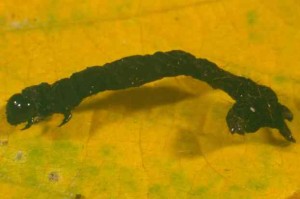Bt (Bacillus thuringiensis) is a naturally occurring bacteria which produces spores that contain a toxin. There are a number of different strains of Bt, each usually specific to an insect group.
Bt is available in a range of pesticide formulations, and has been incorporated into some varieties of genetically modified crops such as cotton and corn, to significantly reduce the number of sprays required per season.
The major advantage of Bt is that it is essentially non-toxic to people and animals. This high margin of safety recommends its use on food crops or in other sensitive sites where pesticide use can cause adverse effects. Bt integrates well with other natural controls.
The most commonly Bt-based insecticides are often applied as liquid sprays on crop plants, where the insecticide must be ingested to be effective. Bt is susceptible to degradation by sunlight. Most formulations persist on foliage less than a week following application. Rain or overhead irrigation can reduce effectiveness by washing Bt from crop foliage.
How does it work?
The highly toxic protein produced by the bacterium attacks the gut wall, causing holes in the gut and the insect stops feeding. The bacterial spores contained in the protein then leak through the gut wall and cause a bacterial infection. Bt causes larva to stop feeding soon after it is ingested. Larvae become immobile and death occurs within 3–4 days due to this bacterial infection or starvation. Affected larvae turn black and shrivel up. Larvae must eat Bt for it to be effective. Bt does not spread in the larval population.
The highly specific activity of Bt insecticides might limit their suitability for use on crops where problems with several pests occur, including non-susceptible pests (aphids, grasshoppers, etc.).
Application considerations
- Spray late in the day to minimise UV breakdown of product.
- Apply as a uniform spray to leaf surfaces as BT requires ingestion.
- Target the small larvae, <5 mm long (less effective against larvae >5 mm).
- Avoid applying if rain (or overhead irrigation) is expected within 24 hours.
- Use a wetting agent and high water volume.
- Ensure water is not too alkaline. Aim for pH of 6.5 to 8.0
- Use the appropriate strains and formulations suitable for the target pest.
- Spray within a few hours of mixing
- Note that while larvae stop feeding soon after ingestion, they do not die for several days.
Further information
- How does BT work? (University of California)

